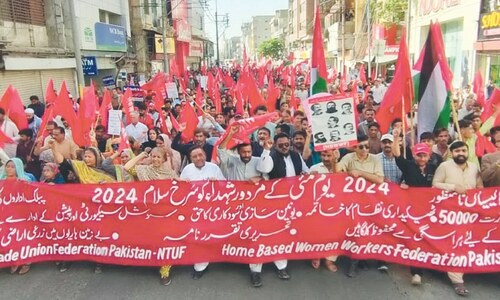LAST week, a family member of an Afghan journalist who worked for a German broadcaster was killed by the Taliban. They went from house to house searching for the journalist, who was already in Germany, and instead murdered a relative in a stark warning for other media personnel. This is one of innumerable terrifying tales to have emerged from Afghanistan in recent weeks. But the unravelling of Afghanistan’s press is an especially distressing development.
In their first press conference, the Taliban insisted the media could function, as long as it followed some ‘suggestions’: adherence with Islamic values, impartiality, and upholding the national interest. The world has since watched with amazement as private news channels have continued to broadcast, with female journalists still on air, albeit with tempered content.
Preserving Afghanistan’s press would be a major sign that Taliban 2.0 is taking a different tack. It is one of the country’s greatest success stories. From having no independent media under the previous Taliban regime, the country has gone on to boast more than 170 radio stations, over 100 newspapers and dozens of television channels.
But developments suggest that Afghanistan’s press, for many years the freest in South Asia, will be among the Taliban’s first victims. According to Nai, a media advocacy group, at least 30 media workers have been killed, wounded or tortured since the start of the year, and that’s before the Taliban took control. Fifty-one media outlets have also closed over the past four months.
Afghan media may be among the Taliban’s first victims.
Afghan journalists are going into hiding, quitting the profession, erasing their online profiles, fleeing the country — or trying to. Their situation has been deteriorating since the Taliban began making territorial gains earlier this year. A UN report in February indicated that attacks and threats against journalists were becoming more targeted. According to Human Rights Watch, the Taliban track reporters online, leaving chilling warnings on Facebook feeds or via text message, or detain them overnight. Threats are peppered with details about a journalist’s movements, family members and work.
Female journalists are particularly threatened, despite Taliban avowals that women can continue to have a role in public life. Women say they have received death threats, or have gone into hiding after hearing of the Taliban searching for them door to door. They take the threats seriously, after a series of assassinations of female journalists over the past year (including some claimed by IS).
Irrespective of the pacifying statements in last week’s presser, the Taliban’s view of journalists is clear. The Taliban spokesman in May warned that journalists would ‘face the consequences’ for one-sided reporting or collusion with intel agencies. The group has long painted journalists as Western agents, spies, and sell-outs, thereby justifying violence against them.
In regions where the Taliban have seized control, they have suspended or closed media outlets. Over 1,200 journalists have lost their jobs due to closures, or after being replaced by Taliban supporters. Media outlets that reopen typically broadcast Taliban propaganda.
Read: Afghan journalists at risk
This situation is untenable for the journalists, the country and region. Reliable information will be of critical importance in the Afghan context in the coming months. The Afghan people and international watchers need to know how the Taliban are operating in villages and towns, what services they’re offering, how they’re enforcing law and order, and whether there’s evidence of brutality. Accurate updates will shape the Afghan public’s response to the new regime, and the world’s approach to any Taliban-led administration.
Over the past two decades, Afghanistan’s media emerged as a barometer of public opinion, serving as a conduit between people and their government. Popular call-in radio shows created a discursive culture. If Afghans cannot voice their grievances through this medium, they may turn to more aggressive means.
Regional countries benefit as well from Afghanistan’s press. Pakistan, in particular, needs a thriving media landscape in Afghanistan. Knowing the scale and nature of the brewing humanitarian crisis, for example, would enable Islamabad to better plan for the flow of refugees. Accurate information about the security environment will be key for assuring Pakistan’s own security.
This should have been a key area where Pakistan could influence the Taliban for the better. Sadly, our own track record on media freedom makes it difficult to make a compelling argument. Indeed, the Taliban may be imitating our censors in their use of terms such as ‘religious values’ and ‘national security’ to keep journalists guessing, and increasingly self-censoring. In an ironic twist, could our strategic need for a free, independent media in Afghanistan inspire us to improve our own position on press freedom?
The writer is a political and integrity risk analyst.
Twitter: @humayusuf
Published in Dawn, August 23rd, 2021













































